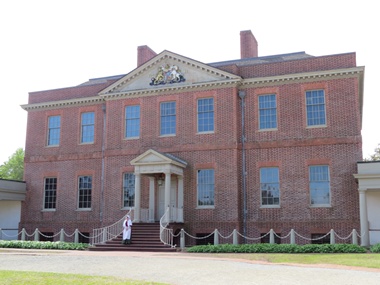
2016-04-08: Tryon Palace
Tryon Palace in New Bern was North Carolina's first permanent capitol. The house was built between 1767 and 1770 by royal governor William Tryon who represented the British crown. A fire destroyed the palace in 1798 and more then 150 years later a new palace rose again on the original foundation based on archaeological evidence and extensive documentation. So although everything on the site is relatively new, it is built exactly like the original palace and decorated with period furniture.
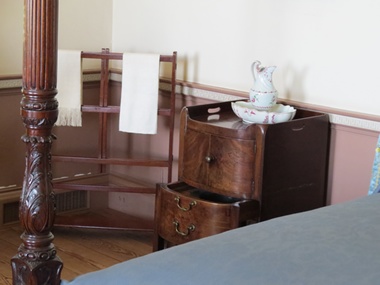
2016-04-08: Commode
I thought this commode built into the bottom drawer of the bedside table was pretty clever.
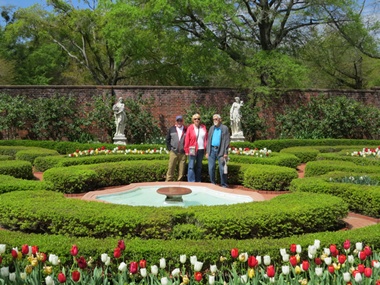
2016-04-08: Formal Garden
The gardens of Tryon Palace were really still waking up from winter and wasn't as pretty as it will be in another month or two but we still enjoyed wandering around.
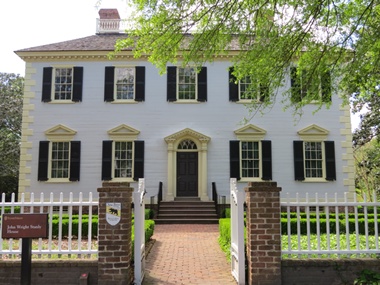
2016-04-08: Stanly House
John Wright Stanly was a merchant and Revolutionary Patriot who maintained a fleet of trading and privateering vessels that brought in supplies that were vital to North Carolina's wartime strength. His home, built about 1779, was a two-story Georgian style frame dwelling.

2016-04-08: Christ Episcopal Church
This beautiful church was consecrated in 1875 and is on the National Register of Historic Places. As you enter the church, the focal point is the large stained glass window above the richly carved walnut altar. Dark woods are complimented by the richly colored stained glass windows and sparkling brass appointments. What a beautiful church.
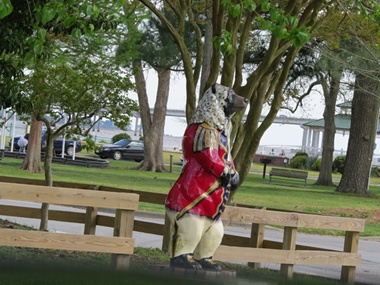
2016-04-08: Bears
The city symbol of New Bern is a bear so you can find these bears, decorated by local artists, all over town.
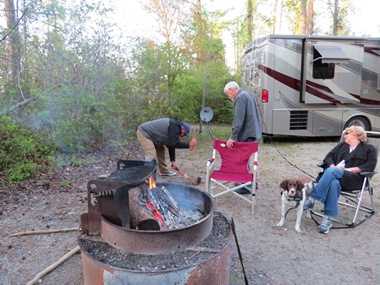
2016-04-08: Campfire
Since we're staying in a federal campground, we can have a campfire.
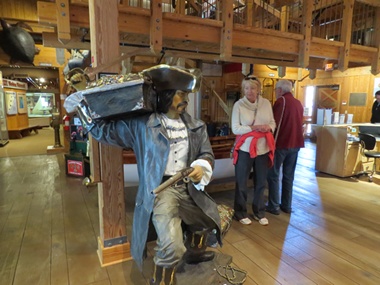
2016-04-09: Beaufort
A day trip to Beaufort found us visiting the North Carolina Maritime Museum where we got to see artifacts from Blackbeard's flagship, Queen Anne's Revenge. It is just amazing what they were able to retrieve after the ship laid underwater some 175+ years.
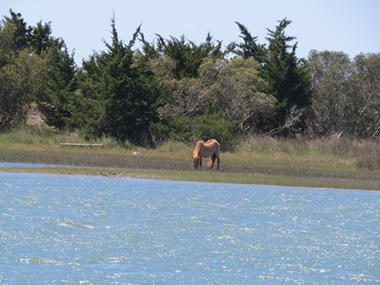
2016-04-09: Wild Horses
Wild mustangs live on an isolated nine-mile long barrier island between Beaufort Inlet and Cape Lookout. This hearty herd of about 100 horses are descendants of Spanish Mustangs that were brought to the Carolina coast by Spanish explorers in the early 1500's. They have free run of Shackleford Island which has no human habitation.
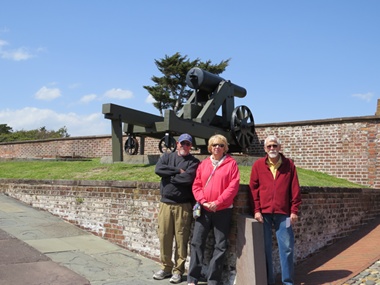
2016-04-09: Fort Macon
Five-sided Fort Macon is constructed in 1834 of brick and stone. Twenty six vaulted rooms are enclosed by outer walls that are 4.5 feet thick. The fort is surrounded by a wide moat which served to protect it. It was built to help protect Beaufort which was designated as a port of entry during colonial times.
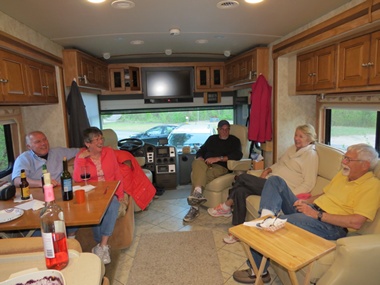
2016-04-09: Dinner
Jay and Marji Otto, high school classmates from Connecticut, now live in New Bern and came to the campground for dinner, We were hoping to eat outside and have a campfire but the frigid air and wind kept us inside eating and visiting. What fun!
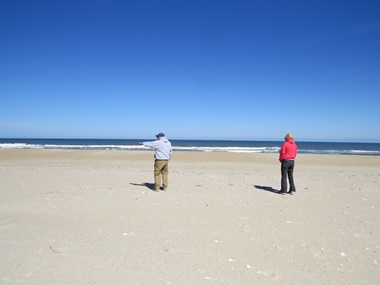
2016-04-10: Outer Banks
I have finally arrived at the Outer Banks, a 130-mile stretch of barrier islands off the coast of North Carolina. Here in Rodanthe on the OBX (that's how one refers to the Outer Banks) the Atlantic and the Pamlico Sound are only separated by a narrow strip of land. We quickly got set up and went to the beach.

2016-04-10: Uke
Since we were having beautiful weather, Al went outside and practiced his uke.
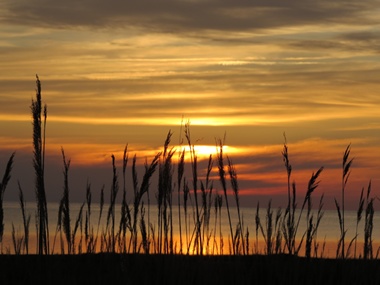
2016-04-10: Sunset
Our campground is on both sides of Highway 12 - we chose the sound side so I could have my sunsets. What a beautiful sight!
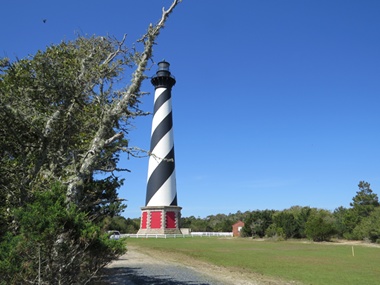
2016-04-11: Cape Hatteras Lighthouse
The Cape Hatteras Lighthouse, with its black and white candy-cane stripes, is one of the most famous and recognizable lighthouses in the world. Protecting one of the most treacherous stretches of the OBX, with a beam of light that spans 20 miles into the ocean, the lighthouse is also the world's tallest brick lighthouse at a staggering 208 feet. The lighthouse was constructed in 1870 and automated in 1950.
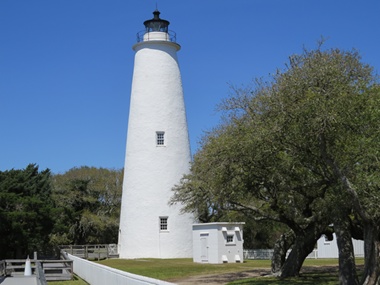
2016-04-11: Ocracoke Light
We took the ferry to Ocracoke Island - our 20-minute ride turned out to be 60-minutes because the ferry had to wind around many shallow areas. Here on the island, we first visited the Ocracoke Island Lighthouse which may not be the most imposing of the OBX lighthouses, but is North Carolina's oldest lighthouse in operation, and the second oldest in the United States. At just 65' ft. tall, it is the smallest lighthouse on the OBX, but its beacon can be spotted up to 14 miles into the Pamlico Sound and the Atlantic Ocean. It was commissioned in 1823 and automated in 1955.
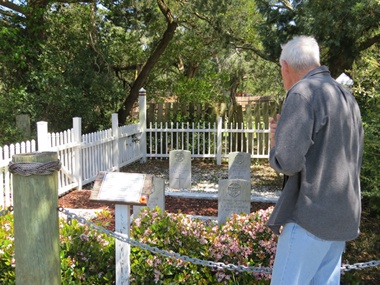
2016-04-11: English Cemetery
Next stop was the English cemetery. During World War II, German submarines sank several British ships including the HMT Bedfordshire, and the bodies of four British sailors were washed ashore. They were buried here in a cemetery which continues to be maintained by England and the US.
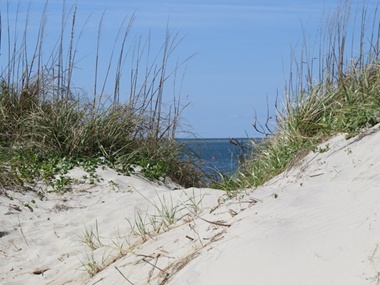
2016-04-11: Dunes
Waiting for the ferry back to Hatteras, I couldn't resist a short walk through the dunes in search of a few more shells.

2016-04-12: Bodie Island Lighthouse
The third and current Bodie Island lighthouse, with its original first order Fresnel lens, was completed in 1872 and stands 156 feet tall. It remained manned until 1940, when the lighthouse was fully automated.
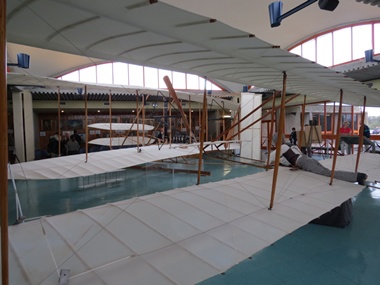
2016-04-12: Wright Brothers Memorial
Wind, sand, and a dream of flight brought Wilbur and Orville Wright to Kitty Hawk, North Carolina where, after four years of scientific experimentation, they achieved the first successful airplane flights on December 17, 1903. With courage and perseverance, these self-taught engineers relied on teamwork and application of the scientific process. What they achieved changed our world forever. It was pretty amazing to walk where they walked and to see a replica of their flying machine.
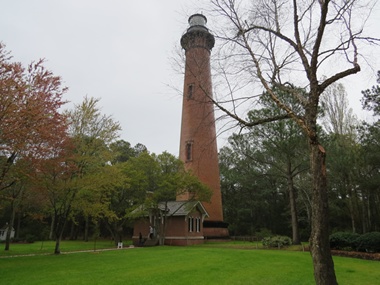
2016-04-12: Currituck Lighthouse
On December 1, 1875, the Currituck Beach Light, an example of Gothic Revival architecture, was completed. Unlike the other OBX lights, Currituck Beach Light was not painted which left its brick facade visible. The Lighthouse is 162 feet tall and was automated in 1939. The original first order Fresnel lens still functions today when it comes on every night and shines at 20 second intervals to warn ships that these barrier islands are here. I think this is my favorite lighthouse on the Atlantic.

2016-04-12: Roanoke Island Inn
This rambling 1860's house was originally a small simple island house built for the current innkeepers great-great grandmother. The house was enlarged soon after the turn of the century and has continued to grow with each generation. Today it is a wonderful bed and breakfast with calming gardens and a koi pond.
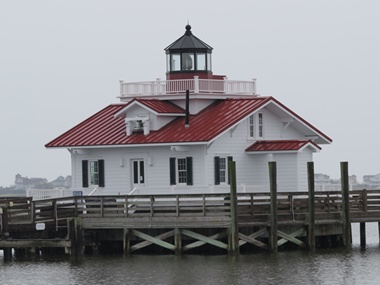
2016-04-12: Roanoke Marshes Lighthouse
The Roanoke Marshes Lighthouse is a replica of the original lighthouse that was constructed in 1877 at the southern entrance of the Croatan Sound to help both passing sailors and local fishermen find their way to port. The prim white exterior with black shutters and red shingled roof, capped off by a 2-foot 4-inch tall lens, gives this lighthouse a classic coastal look. It was decommissioned in 1955.
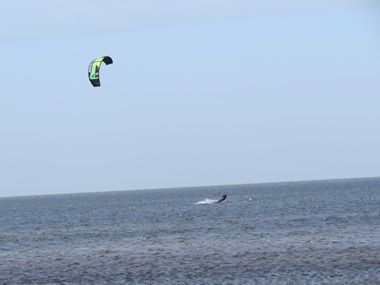
2016-04-13: Wind Surfing
Because of constant winds, the Pamlico Sound is a favorite wind surfing area. It's been fun watching them from our campsite but today found us going to watch them up close. Since the wind has been blowing in excess of 25 mph all day, I was rather surprised that they were out there! Some of them were even coming 10+ feet off the water as they moved along. Amazing!

2016-04-13: Pea Island National Wildlife Refuge
The objective of Pea Island National Wildlife Refuge is to provide nesting, resting, and wintering habitat for migratory birds and other wildlife. Even though the wind was howling, we bundled up and went to check it out. The animals were much smarter then us - they were had hunkered down so all we saw were some brave egrets and stilts.